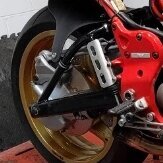
Meinolf
Members-
Posts
169 -
Joined
-
Last visited
-
Days Won
17
Meinolf last won the day on August 29 2024
Meinolf had the most liked content!
About Meinolf
- Birthday 04/30/1959
Profile Information
-
Location
Germany
-
My bike(s)
Norge, V11, LM3, Mille GT, V1000G5+TR5 sidecar, 850 T5 Carabinieri, SPIII and assorted other makes
Recent Profile Visitors
Meinolf's Achievements

Guzzisti (2/5)
234
Reputation
-
How to edit the engine map for a V11 15M ECU?
Meinolf replied to nuevototem's topic in Technical Topics
My pleasure -
How to edit the engine map for a V11 15M ECU?
Meinolf replied to nuevototem's topic in Technical Topics
Abbreviation for binary -
How to edit the engine map for a V11 15M ECU?
Meinolf replied to nuevototem's topic in Technical Topics
Ist there a question? -
How to edit the engine map for a V11 15M ECU?
Meinolf replied to nuevototem's topic in Technical Topics
Hi, your setup, especially modifying the airbox, is counterproductive. Removing the lid and snorkels decreases air throughput itself and the makes for unsteady airflow. Numerous benchmarks have shown that the original X-pipe is overall the best one. Anyway, attached the latest version of the BIN I'm working on. After having started logging AFR left/right, rpm and TPS several years ago using Innovate LM2, which is highly unsuited for the job, I recently installed the Zeitronix ZT2/ZT3 equipment and began relogging. Much more accurate, though the data analysis software sucks. The latest version is attached. My setup is mostly original except for TI exhausts (will move back to stock as the are much to loud), modified butterfly valves and shafts, original airbox with bell-formed entrance of the snorkels. The butterfly mod is the most likely to impact the usability of my BIN with other bikes. Your setup will likely result in a richer mixture and decreased AFR. Just try it. However, the BIN might be useful as base for your own tuning, as I corrected several of the (faulty) original trim tables - baro, engine/air temp. The BIN is optimized for 0.25mm valve play, both exhaust and intake. It's absolutely essential that the TPS is set to 157mV. Not 150mV, as commonly suggested, that value is the result of wrong rounding in the TPS lookup tables converting mV to degree in the BIN. Both bypass screws completely closed. Synchronisation in idle only via the TPS stop screws (this needs to be done carefully, as it depends on leveraging the looseness in the connections), sync procdure at higherr pms is unchanged. CO trim set to 0. The AFR target values I selected are based on the vacuum in the intake tract. Rich in areas where the throttling effect is low, leaner in areas with higher throttle losses. The lowest hanging fruit is to sync AFR values in as many breakpoints which can be reached while street riding or test bench. Actual AFR values, unless there's a serious lean/reach situation, have much less impact. Avoid stochiometric AFRs. While the V11 engine works reasonably well in closed loop (15RC) at 14.3, it doesn't run well at even slightly leaner AFRs. Cheers Meinolf v11 3.6.2024.bin -
How to edit the engine map for a V11 15M ECU?
Meinolf replied to nuevototem's topic in Technical Topics
Hi, you might want to use this XDF. I've restarted investigating the 15M/RC code some time ago and updated the XDFs as well. Not finished by far, but more comments and naming of previously unknown scalars/tables. Cheers Meinolf 15M_GuzziDiag_V3.0.xdf -
Andreani upgrades for V11 OEM Marzocchi forks
Meinolf replied to al_roethlisberger's topic in Technical Topics
Hi, this is going to be a quick one. A leaking fork seal in the left fork was the reason I started looking into the cartridge topic in the first place. I ordered the cartridge from an Italien dealership last Friday and today, 4 days later they arrived. Getting the fork seal out proved the biggest challenge in the whole enterprise, the spring ring to secure the fork seal used is a nightmare to get out. Finally I ground a small groove into the material and got the leverage needed. What a crazy spring ring selection, looks like a custom made part only for Guzzi. The Andreani kit installation was totally straightforward. Remove the original cartridge, install the new cartridge, fill oil up to specified level and done. I took a quick spin and the fork forked :-) Not optimal yet, but it felt less bumpy than the OEM. During the next days I'll adjust the settings and see if the investment was worthwhile. Cheers Meinolf -
Andreani upgrades for V11 OEM Marzocchi forks
Meinolf replied to al_roethlisberger's topic in Technical Topics
Hi, I was looking for installation instructions, the fork kit should arrive later today, and stumbled across this link https://www.omniaracing.net/en/andreani-misano-evo-adjustable-hydraulic-cartridges-for-moto-guzzi-v11-mans-20012006-p-43777.html. There are 5 different files available for download, so there seem to be more fork variants. Confusing that all are intended for 105/G08E. Cheers Meinolf -
Andreani upgrades for V11 OEM Marzocchi forks
Meinolf replied to al_roethlisberger's topic in Technical Topics
Gentlemen, thanks for the numerous replies. A cartridge set is on its way, I'll post an update once the set is installed. Cheers Meinolf -
Meinolf started following Andreani upgrades for V11 OEM Marzocchi forks
-
Andreani upgrades for V11 OEM Marzocchi forks
Meinolf replied to al_roethlisberger's topic in Technical Topics
Hi, excellent discussion on the topic. Can anyone confirm if 105/G08E is the correct Andreani article number for the 40mm black Marzocchi forks on a 2001 V11? Thanks Meinolf -
ANSWERED TPS break points at low throttle openings
Meinolf replied to audiomick's topic in Technical Topics
Hi Mick, no, 15mV tolerance is not sufficient. The total spread between the first breakpoints is ~20mV. Assuming you are off +15mV from 157mV would put the TPS well within the range of the next breakpoint; target missed. Even +/-10mV is stretching it thinly, +/-5mV is the highest tolerance I would go for. Cheers Meinolf -
ANSWERED TPS break points at low throttle openings
Meinolf replied to audiomick's topic in Technical Topics
Hi, if I understand your question correctly then the answer is easy. Looking at the first relevant voltage entries 0.176V - 0.157V - 0.137V the delta is 0.019V and 0.02V respectively, so the range is +/-0.02V for the inital entries. However, let's not forget that we are looking at millivolts here. I doubt that the average DMM has the accuracy and repeatability to operate reliably in the millivolt and below range. Test lead resistance, tolerances of the ADC, accuracy of the 5V supply to the TPS and the general operation of an ADC came into play. Cheers Meinolf -
ANSWERED TPS break points at low throttle openings
Meinolf replied to audiomick's topic in Technical Topics
Hi, as to the question why more TPS breakpoints are used in the low range than in the upper. It's about flow area increase when the butterfly valve is opened. The flow area resulting from the movement is based on a rather complicated cosine formula, several years ago Beard kindly wrote a small program to simplify the calculation. Looking at the 1st (TPS degree) and 4th column (free flow area in mm^2 including the butterfly axle diameter) one can derive the change in %. 7.7/5.2=1.46=46% increase 22.0/20.0=1,1=10% increase So, ~2.3 TPS degree change at low throttle opening result in 46% flow area increase, a 2.0 TPS degree change in mid range is 10% flow area. It makes sense to use TPS breakpoints which provide the a like flow area increase. Cheers Meinolf -
ANSWERED TPS break points at low throttle openings
Meinolf replied to audiomick's topic in Technical Topics
Hi, it didn't take that much time. The 157mV instead of 150mV is simply based on a rounding error in the OEM TPS lookup table. 5V/255=0,01953V 8x0,01953= 0,1563V=156,3mV Now one may argue if the 6,3mV difference is significant. No, it isn't. But why use a wrong value if the correct one is known. Cheers Meinolf -
ANSWERED Acceleration Enrichment Map-2004 Rosso Corsa
Meinolf replied to Rob NZ's topic in Technical Topics
Hi, as rightly pointed out the 15M has neither the internal connection from the Lambda voltage signal pin to the PCB nor the code neccessary to process the signal if it were to arrive. And the RC code can't be uploaded to the 15M w/o bricking it. But, the real problem lies elsewhere. The V11 engine was not designed with a Lambda of 1 as permanent value over a range of rpm/TPS in mind. It runs quite well with Lambda 1, but even slight changes to 1.03 are instantly and clearly noticeable. Not favorably, mind. The CARC models in contrast work well and one doesn't notice the same degradation. During my tests I oftentimes had entire regions of Lambda exceeding 1.1 without even noticing it, only the logged data did show it. So, upgrading to closed loop absolutely requires a cylinder selective tuning of the fuel values to achieve a synchronized Lambda no higher than 1 on both cylinders. Which in my case extended over many months of datalogging and analysis. Also consider the reason why a constant Lambda 1 and there closed loop operations were introduced before starting this journey. Emission control was the driver. The catalysator works best at 1 and has the highest conversion rate. If the cylinders are selectively tuned anyway to allow a closed loop operation, then closed loop is not required and the catalysator isn't there anyway. Cheers Meinolf -
ANSWERED Acceleration Enrichment Map-2004 Rosso Corsa
Meinolf replied to Rob NZ's topic in Technical Topics
Hi, I fully agree with above. The main issue with the OEM BINs and their fuel values is the lacking synchronisation of the lambda (AFR) values between the 2 cylinders. If lambda is different between the cylinders at a given operating point the engine will not run as smoothly and efficient as it could in non-closed loop mode. If it's in closed loop the slow OEM lambda probe excerbates the discontent as differing lambda values are reported to the ECU from one combustion cycle to the next. It goes crazy trying to cancel out countermanding values. Evening out the lambda values between the cylinders at any given breakpoints will achieve 95% of what can reasonably be achieved. Everything else is cream on top. And as the time needed for either is inverse (5% getting the lambda synchronity right/95% to for the rest), Plus, this approach fits best to the OEM ignition values. I have no means of checking them, but guess/hope that Mandello knew better/had the required setup, to get these right. Cheers Meinolf





